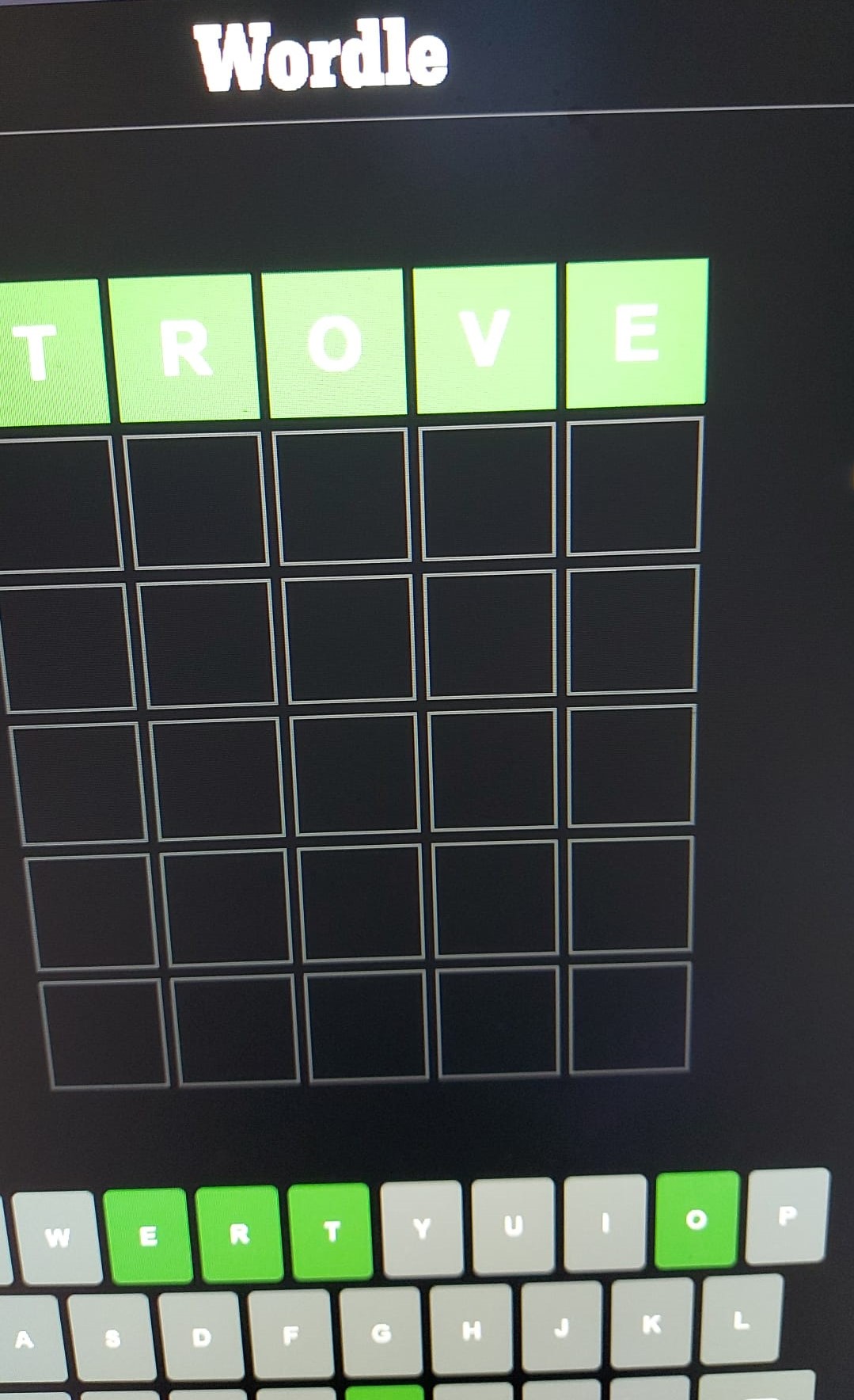I’ve been playing Wordle for the past week. I got curious and decided to dig into the source code. My goal was to find out how guesses are validated - and it turns out to be designed in a strange way.
Initial discovery
To kick off my search, I wanted to see if the NYT wordle page was making any requests to a backend validation service. I imagined that a user would send a guess e.g. hello to a URL (let’s say https://www.nytimes.com/games/wordle?guess=hello) and the backend would respond with an HTTP 200 OK containing True of False as a response body.
Before I could start digging for requests, I needed to turn the minified JavaScript into some readable code.

After running the code through a formatter, I had something I could work with:
(this.wordle = this.wordle || {}),
(this.wordle.bundle = (function (e) {
"use strict";
function a(e) {
return (a =
"function" == typeof Symbol && "symbol" == typeof Symbol.iterator
? function (e) {
return typeof e;
}
: function (e) {
return e && "function" == typeof Symbol && e.constructor === Symbol && e !== Symbol.prototype ? "symbol" : typeof e;
})(e);
}
[...]
By chance I found a wordlist in the source code (!).
var Ma = [
"cigar",
"rebut",
"sissy",
"humph",
"awake",
"blush",
...
]
My guess was that this was the list of accepted 5 letter words. Out of curiosity, I searched for the solution to the previous day’s puzzle. Since I have been playing for a few consecutive days, I immediately noticed that this list was actually the list of solutions. To make things worse, the list was ordered, meaning that I today’s word would be the next in the list:
var Ma = [
...,
"swill",
"tacit",
"other", // <= the solution to the day before yesterday's puzzle
"thorn", // <= the solution to yesterday's puzzle
"trove", // <= my guess is that this is the solution to today's puzzle?
...
]
I tried my luck, an lo and behold (excuse the bad quality pic, I was super excited about the find so I hurriedly snapped a pic from my phone instead of taking a screeshot)

Reverse engineering
I wanted to dig a little deeper and check whether my intuition was right by looking at the source code. I wanted to find the code responsible for performing the validation, since I know the list of solutions is the list Ma: List<string> all I had to do was search for code using this list. I stumbled upon this interesting block:
var Ba = new Date(2021, 5, 19, 0, 0, 0, 0);
function Ga(e, a) {
var s = new Date(e),
t = new Date(a).setHours(0, 0, 0, 0) - s.setHours(0, 0, 0, 0);
return Math.round(t / 864e5);
}
function Va(e) {
var a,
s = Fa(e);
return (a = s % Ma.length), Ma[a];
}
function Fa(e) {
return Ga(Ba, e);
}
This section is returning the correct solution for a given day, let’s see if we can rename the variables to make it cleaner:
var wordleStartDate = new Date(2021, 5, 19, 0, 0, 0, 0);
function getDayOffset(startDate, date) {
var s = new Date(startDate),
t = new Date(date).setHours(0, 0, 0, 0) - s.setHours(0, 0, 0, 0);
return Math.round(t / 864e5);
}
function getSolution(date) {
var index, offset = getDayOffset(date);
return (index = offset % wordList.length), wordList[index];
}
function getDayOffset(date) {
return getDayOffset(wordleStartDate, date);
}
And voilà! Wordle started in 2021 on the 19th of May, so according to this logic, the solution for the puzzle on that day was cigar. On February 23rd, on the 249th day since Wordle was launched, the solution was indeed trove.
var Ma = [
"cigar", // solution day 0
"rebut",
"sissy",
"humph",
"awake",
"blush",
...,
"trove", // solution day 249
...
]
How to make it cheat-resistant?
The guesses shouldn’t be validated on the client side, but rather they should be sent to an API which returns True/False for each guess. Although this is the ideal solution it requires additional work since NYT would have to develop & maintain this API and make sure to apply rate-limiting to avoid having cheaters submit all 5 letter words in the english language every day.